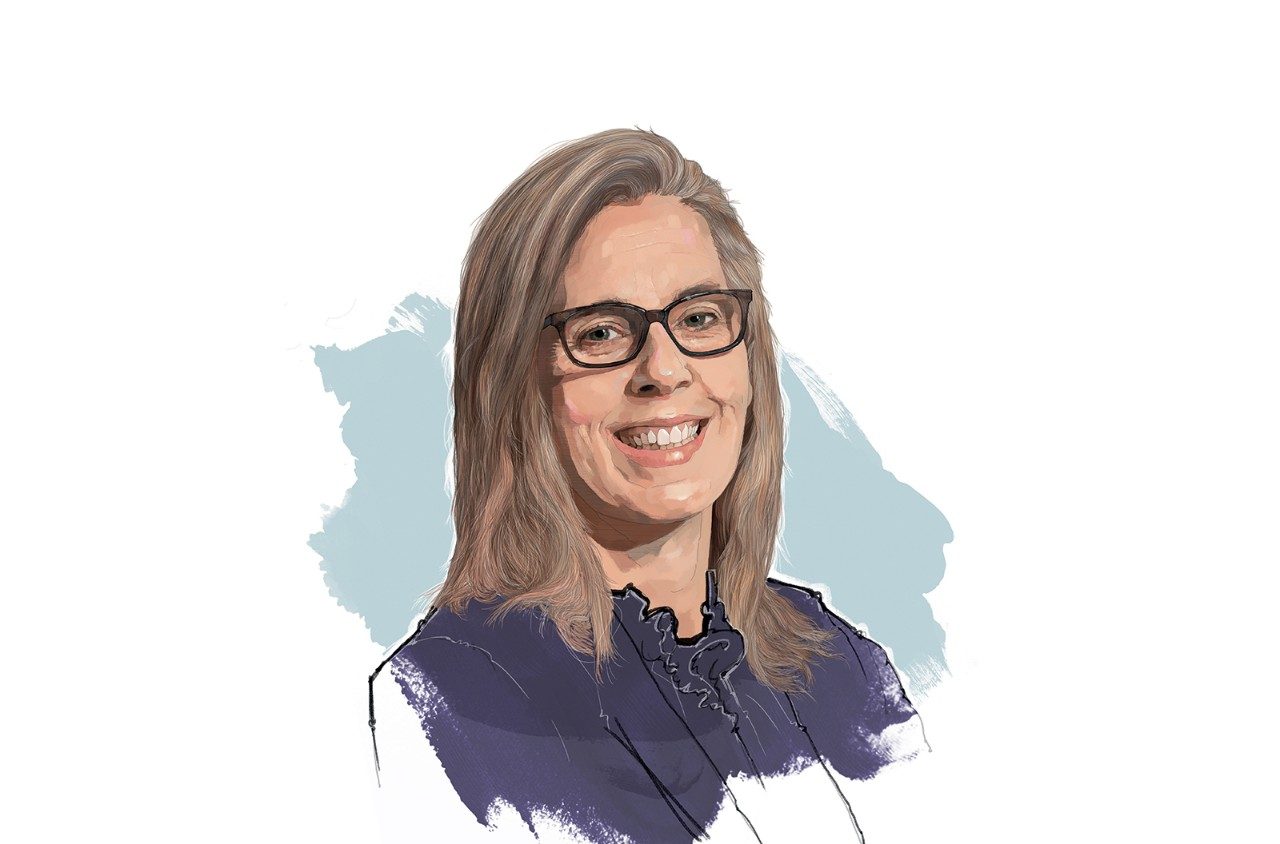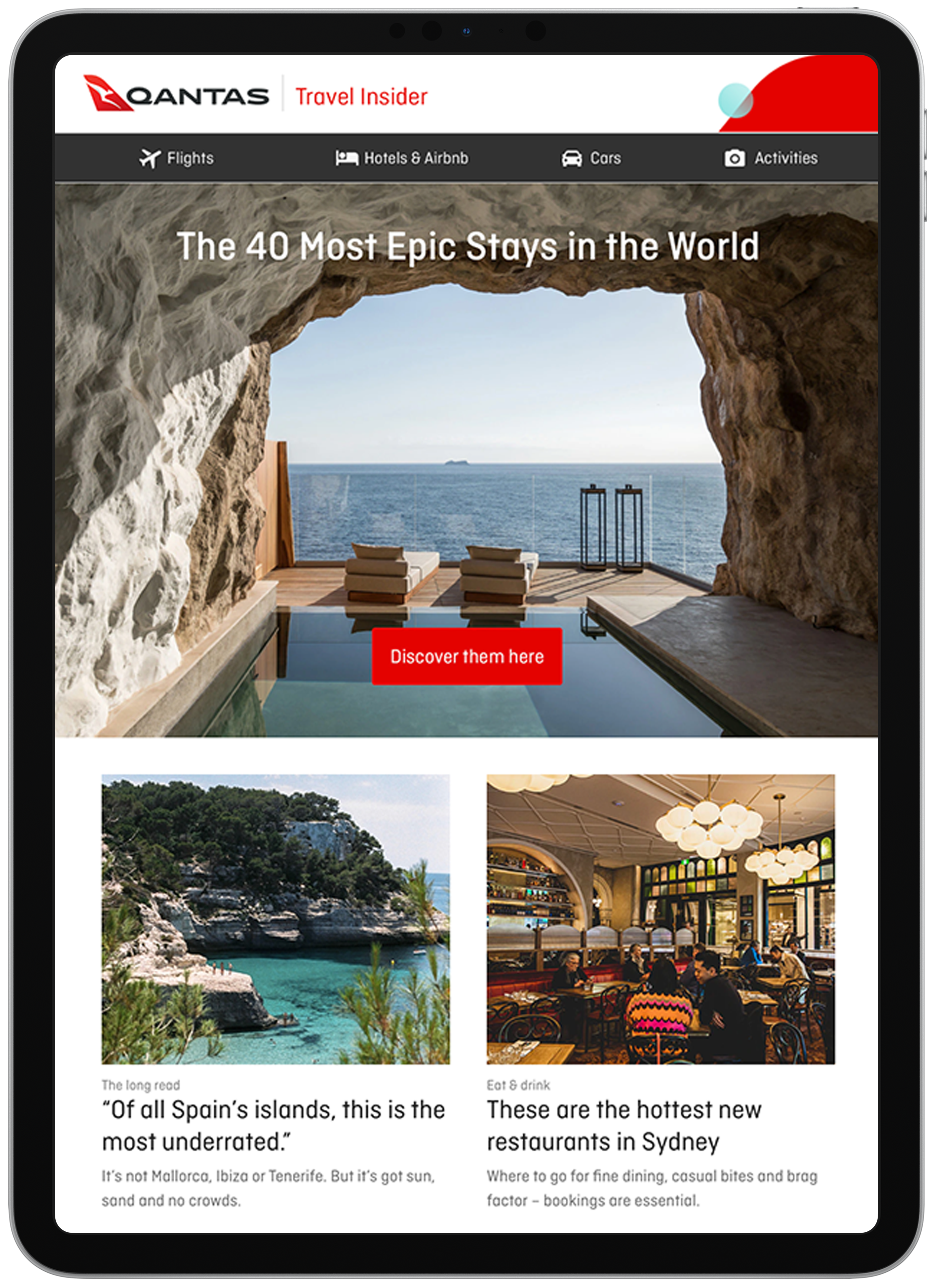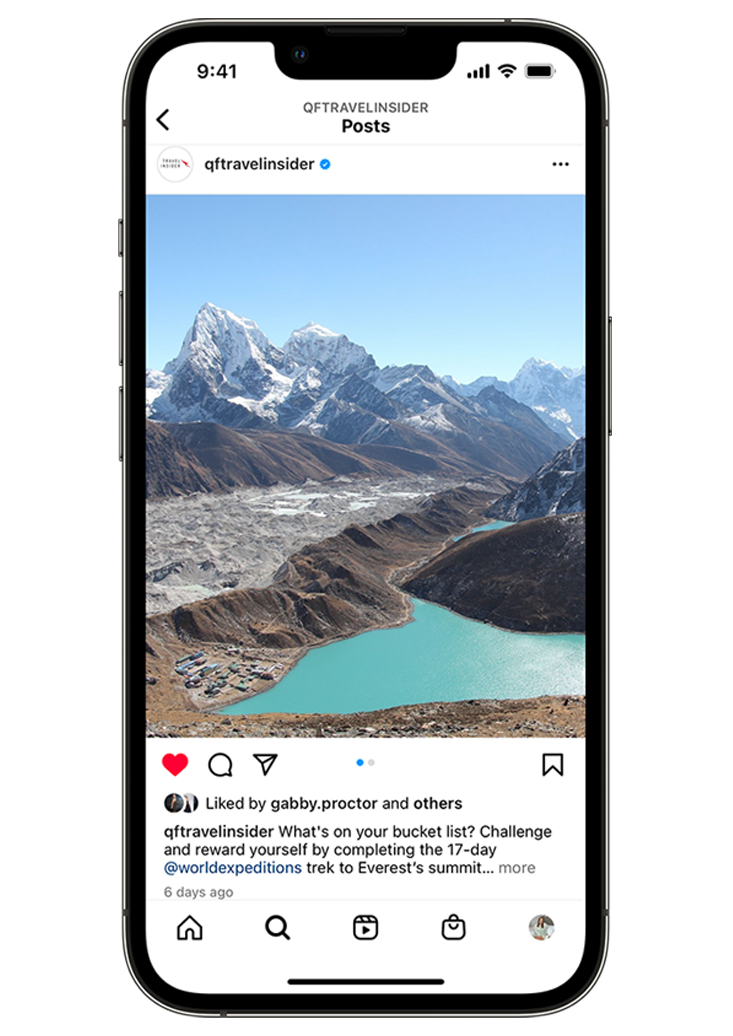Janet Menzies on Taking the Customer Experience to the Next Level

Janet Menzies, the director of Asia Pacific at Amazon, was “a bit shocked” by the culture at the online retail behemoth when she joined. Now? She absolutely revels in it.
Current role Director Asia Pacific Stores, Amazon
Tenure Two years
Previous roles Country manager, Amazon; director, category leader, Amazon; CEO, Champions of Change Coalition; general manager Australia and New Zealand, Cochlear; co-founder, Head Over Heels; management consultant, McKinsey & Company
How do you define great leadership?
The leaders I admire are really good at crisply articulating what they want to get done and why it’s important – and then empower people to do the work. They’re good listeners as well; they’re able to look at information from lots of different sources and elicit the voices that might be quieter and include them in that vision formulation.
What’s the biggest opportunity for Amazon in Australia?
To raise the bar on what a great customer experience looks like and to make it practical for Australians to shop online: “Wow, I can get a really huge selection, I can get it quickly and reliably, and I know that the pricing will be good.” We still have so much improvement to make but I think we’re now at a place where Australians do trust us. Across the sector, retailers have stepped up and are creating greater experiences.
And what would you say is your biggest challenge?
We have to continue to stay focused on the customer and not waver from that position. We’re at our best when we’re clear on what that looks like. We need to continue to deliver great pricing and great events and to get faster and faster on delivery.
You could argue that a lot of retailers have lost their way because they haven’t been focusing on customers so much.
That’s one of the strengths of Amazon. The customer is always in the room. Our leadership principles tell us we need to be customer-obsessed. They also tell us we have to think for the long term. In meetings, we usually lead with, “What’s the experience we’re trying to create for the customer?” And we work backwards from that.
An Australia Post report puts our online share of retail spend at 16.8 per cent. That’s much lower than other markets. Why do you think that is?
For a long time, Australians didn’t have access to great customer experiences online. You’d order something and be grateful that it arrived, right? That was understandable. There hadn’t been a lot of investment in the kinds of networks required and the technology that needed to happen. It’s only when you consistently create great experiences that people shop online. If you earn trust, that’s when the online experience becomes competitive with the very familiar offline one.
Ruslan Kogan once described his company to me as a statistics business masquerading as an ecommerce business. He said it’s all about the data and fine-tuning the algorithms to really drive success. Do you agree?
I think retail is detail. Analytics are so important. You have to get inventory closest to the customer. You’ve got to anticipate what that inventory is and be able to price it in a way that offers good value. There’s a lot of maths and mechanisms behind that because you’re sending out orders every day. And you have to anticipate. We’re obsessed with making sure that we understand the underpinnings of our business. We’re constantly tracking how many new products we add each day. How many of those products were out of stock? If they’re out of stock then why? Every week I’ll review how many people we promised delivery to on a certain day but who we didn’t deliver to on that day. Breaking a promise is a big deal at Amazon. If there has been a weather event in Brisbane, the question is, “What can we do next time to predict that event? And why did we give that promise if we knew there was a storm coming? Or do we need to better anticipate if there’s a storm coming?” We’re highly focused on a set of inputs that we know create a good customer experience.
Amazon has asked its workers to go back to the office five days a week. You have more than 7000 staff in Australia. How did that go down and are you aligned with CEO Andy Jassy?
The vast majority of our folks were already back in the office; our fulfillment centres are a huge part of our workforce. In Andy Jassy’s original note – which is a really well-written communication – he talks about the value of collaboration, how we invent together and how our culture is underpinned by being together. It’s actually very easy to align with because it supports our leadership principles. But my position with my leaders is that I expect them to lead a flexible team because if you do that, you’re going to get the best talent. I would hate for people to conclude that flexibility is dead in a five-day environment. It’s within our power to make it happen. The most important aspect of flexible work is clear objectives. If everyone has goals that are clear, they can take ownership for their work, which empowers them to live the life they want.
At Amazon, you have a leadership principle of ownership. What does that look like?
Whether you work in the fulfillment centre or you join Amazon as a middle manager or a senior leader, there’s an expectation that you can embody the leadership principles. So very early on, there’s a sense of you can do this, you know this, this is your area of responsibility, here are your goals, we trust that you’ll make the best decisions on behalf of the customer. When I first started, I was a bit shocked by how much freedom I have as the country leader. But now I feel very empowered to own the business and to chart that forward.
In meetings at Amazon, everyone sits in silence and reads a document for the first half of the meeting. What’s the benefit of reading in the room versus pre-reading?
Well, there are a couple of practical benefits. As a leader, I’m never in a position where the time that’s been allotted for a task isn’t sufficient. It also puts everyone on a similar playing field. The idea with these documents – and they’re very carefully written – is that everyone, after the reading time, will have access to enough information to make decisions.
What does a good Amazon document look like?
It’s very specific. Six pages for the narrative. No charts, only tables. There are appendices in the back so if people want to dive into a piece of data, they can. There’s an executive summary and you might have a hits and misses section, where you talk about what’s gone well and what’s not going as well. Then you have leadership-attention topics – which might also be called hotly debated topics – and that’s where there are two teams that don’t agree. There’s a recommendation that can go either way and it’s brought to us, the leadership team, to make a decision in the room. That’s really different from other companies I’ve worked at because a good, hotly debated topic is one where you can’t tell who’s on which side – it’s written in a very neutral way and each decision could be a viable one.
Has it changed the way you approach decision-making?
I was a bit shocked by how quickly we move but Amazon has taught me to be comfortable with much, much faster decision-making. One of the frameworks that helps with that – and something we talk about all the time – is the one-way door. The fundamental question I ask is, “Is this a one-way door or a two-way door?”
What does that mean?
If you make a decision and you can change it, that’s a two-way door. If you do it and it doesn’t work, you go back through it. The person who’s close to the customer should make that decision. The one-way door decisions are ones that are hard to come back on because you’ve changed customers’ expectations, for example. Sometimes it’s technology and once you do it, you can’t undo it. Or you might have a big investment. But what we should do in those decisions is make them as two-way door as possible because the more you can transform a one-way door decision into a two-way door decision, the better.
Is it hard to get people to take that level of ownership?
People have to learn it when they first arrive; they need affirmation that it’s what we truly expect. But people like the idea that they’re in charge of something.
It’s the opposite of micromanaging...
Yeah, it is. We do training on this topic. The theme that this would fall under is high-velocity decision-making. We’re constantly looking at, “Why did it take us so long to make that decision? Was it good that we held that decision? Or what was the [additional] information we needed?” That leadership principle is bias fraction – the bias towards taking a decision versus not taking a decision. The document-writing culture, coupled with the decision-making culture, is part of what allows us to be an empowering and productive place to work. And it allows us to move fast.
One of the other leadership principles is to have backbone.
Encouraging people to speak candidly is really, really important to our culture. And it’s my job to be vigilant and protect that. Sometimes you’ll disagree with the decision and we ask people to disagree and commit. People will actually use the words, “I’m asking you to disagree and commit.” We don’t all have to agree but you’re going to trust your colleagues and stand by the decision. That’s partly in the spirit of moving fast. If we take the time to get everyone on board instead of just asking them to disagree and commit, we move a lot more slowly.
What do you think your greatest strength as a leader is?
I’ve had the great privilege of being trained at some very good institutions. I worked for McKinsey for nine years. I think that’s a rigorous environment for problem-solving and I’ve worked for some good people who have taught me to quickly size up a problem, articulate it and then be able to break it down into pieces. It took me a long time to build that and I think I didn’t realise at the time how important it was. I also care a lot about people.
And what is your biggest gap?
I have to work hard on being structured. I’m quite excitable. One of my strengths is I can get people around me motivated to go after these big goals but I also need to know when it’s time to help my team prioritise and stick to that.
What’s one piece of advice you’d give a brand-new CEO?
My old boss, Anthony Bishop at Cochlear, gave me The First 90 Days [a book by Michael Watkins]. It basically says, “Listen, be humble and use those 90 days.” This is your time, where you can formulate in your mind what’s most important. You might rush to make judgments without understanding the whole culture or the set-up itself so making sure that you understand and listen to people around you who’ve been there longer than you is really important.
On the fly
Personal motto
I’m going with Taylor Swift, Long Live. If you listen to the lyrics, it’s all about celebrating teamwork and being aware that you are doing something special.
Email approach
I’m pretty responsive on email. We have a policy at Amazon that it deletes after 30 days. That’s an amazing discipline because it means that I respond.
Motivation tactic
I listen to music on my way to work. I’ve got Taylor, I’m a big Crowded House fan and I have a bit of Coldplay. Music really has the power to lift you up.
Productivity hack
I take half an hour before my day begins to be clear on my daily, weekly and monthly goals.
A rule you don’t break?
Family is first. When I’m in town, I always have dinner with my family and we often play a board game afterwards.
Favourite piece of advice
Feedback really is a gift. You can choose to agree with it or not. If you like the gift, you can use it. If you don’t like the gift, you can set it aside. But the most dangerous situation as a senior leader is that you lose connection and people only tell you the good stuff.



